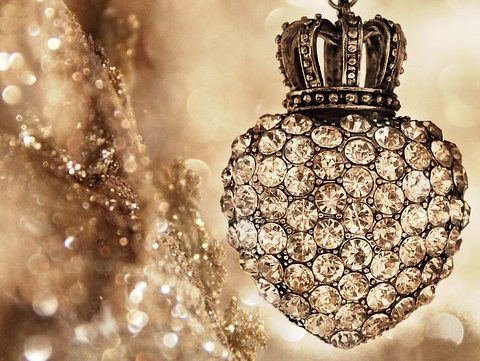The Importance of Certification for Lab-Grown Diamonds
Certification plays a crucial role in the diamond industry, offering consumers assurance regarding the authenticity, quality, and characteristics of a diamond. This is equally essential in the case of lab-grown diamonds, which, despite their identical chemical and physical structure to natural diamonds, are created through artificial processes. A certification serves as a detailed report from an independent gemological laboratory that evaluates specific attributes such as carat weight, color, clarity, and cut, as well as whether the diamond is natural or lab-grown. Without a certification, buyers may find it difficult to verify the claims made by sellers, which can affect trust, resale value, and long-term satisfaction. Additionally, certifications help standardize quality expectations across the industry, especially as the popularity of lab-grown diamonds continues to rise. Given the nuanced differences between production methods and technological identifiers, third-party grading is critical in promoting transparency and accountability among producers, retailers, and consumers. Certification also assists jewelers in accurately describing products, avoiding legal pitfalls and ethical concerns in marketing practices.

Key Characteristics Evaluated in Certification Reports
A lab-grown diamond certificate contains detailed assessments of the same Four Cs used in grading natural diamonds: carat weight, color, clarity, and cut. However, reputable laboratories also include information on the diamond’s origin—specifically whether it was created using Chemical Vapor Deposition (CVD) or High Pressure High Temperature (HPHT) processes. This information is relevant not only for scientific purposes but also for consumers who may have preferences regarding creation methods. Moreover, certification reports may include advanced diagnostic data such as photoluminescence spectroscopy or strain pattern imaging, which help gemologists confirm the synthetic origin of the diamond. Reputable labs also provide diagrams showing the stone’s inclusions and any fluorescence. Another feature often included is a laser inscription on the girdle of the diamond, which contains the report number and a marker indicating it is lab-grown. This serves as a permanent link between the stone and its certificate. Overall, these detailed reports not only inform buyers but also ensure the diamond’s traceability throughout its lifecycle.
Why Reputable Certifying Bodies Matter
Not all gemological laboratories are created equal, and the credibility of a certification heavily depends on the authority and methodology of the issuing body. Reputable certifying bodies employ standardized procedures, use high-precision instruments, and adhere to internationally recognized grading systems. They also publish their methodologies and are subject to peer review and industry scrutiny, which enhances their objectivity. Lesser-known or in-house grading labs may use inconsistent criteria, inflate grades, or omit crucial details like origin disclosure, which can mislead buyers and skew price assessments. Therefore, identifying reputable certifying institutions is essential for ensuring the quality and integrity of a lab-grown diamond. Reliable laboratories also contribute to industry-wide trust by supporting consumer education and dealer accountability. Many of them provide online verification services, enabling buyers to cross-check the authenticity of certificates. Furthermore, reputable labs often update their grading standards as technology evolves, which is particularly important in the lab-grown sector where synthesis techniques are constantly improving. In contrast, certificates from unreliable sources may undermine the entire transaction, affecting resale and insurance claims.
Leading Certification Bodies for Lab-Grown Diamonds
Several globally recognized gemological laboratories are trusted by both the diamond industry and consumers for their rigorous standards and consistent grading practices. Among the most prominent is the Gemological Institute of America (GIA), which began grading lab-grown diamonds in 2007 and introduced full reports, including clarity and cut grades, in 2020. GIA’s involvement lends substantial credibility, given its reputation for strict grading and scientific accuracy. Another highly respected certifying body is the International Gemological Institute (IGI), which has become one of the most prolific graders of lab-grown diamonds due to its global presence and accessibility. IGI certificates are often more affordable and are widely used in commercial jewelry sales. The American Gem Society (AGS), although less involved in lab-grown certifications compared to natural diamonds, is also respected for its research-driven approach. In Europe, HRD Antwerp and Gemological Science International (GSI) offer comprehensive lab-grown grading services with advanced synthetic detection capabilities. Each of these organizations employs strict protocols and often includes additional data points that are relevant to lab-created stones.
Differences in Reporting Among Certification Bodies
Although leading certification bodies follow the same basic grading principles, there are differences in how they present information and the depth of their analysis. For instance, GIA is known for its conservative grading style, which can sometimes result in slightly lower clarity or color grades compared to other labs like IGI. This does not mean the diamond is inferior, but it reflects GIA’s stringent standards. On the other hand, IGI often provides more commercial-friendly reports, which makes it more popular among retailers. Furthermore, while GIA includes detailed explanations of a diamond’s origin and creation method, other labs might use simpler language or omit certain technical specifications. HRD Antwerp tends to emphasize the European grading scale and sometimes uses terminology that differs slightly from U.S. standards. It is also worth noting that not all labs offer laser inscriptions or online verification systems, which are increasingly important features for traceability and anti-fraud measures. Buyers should carefully compare sample certificates and understand each lab’s grading philosophy before placing trust in their assessments.
How Certification Enhances Consumer Protection
Certification plays a pivotal role in protecting consumers from misinformation, fraud, and overvaluation—particularly important in a market that is still gaining mainstream familiarity like that of lab-grown diamonds. With properly documented certification from a reputable gemological institution, consumers can verify that the diamond they are purchasing matches the seller’s claims in terms of quality, origin, and grading. This is especially critical in online purchases, where buyers often cannot physically inspect the diamond prior to purchase. Furthermore, in the event of a dispute—whether regarding returns, resale value, or insurance claims—a certificate provides legal and professional documentation supporting the buyer’s case. Certification also guards against misrepresentation of synthetic diamonds as natural, which can have a significant impact on value. Since some lab-grown diamonds are virtually indistinguishable to the naked eye, the presence of a reliable certificate ensures ethical transparency in transactions and helps uphold consumer confidence in the broader diamond industry.
Technological Advances in Diamond Detection and Certification
As lab-grown diamonds become increasingly difficult to differentiate from their natural counterparts, gemological laboratories have invested in advanced technologies to ensure accurate identification and grading. Techniques such as photoluminescence spectroscopy, infrared absorption analysis, and cathodoluminescence imaging have become integral to the certification process. These technologies allow gemologists to detect subtle indicators unique to lab-grown diamonds, such as growth patterns, metallic inclusions, and strain-induced birefringence. For example, diamonds grown through the HPHT process may contain metallic flux inclusions, while those produced through CVD often exhibit specific color zoning or graphitic layers. Some certification bodies also utilize automated grading machines powered by artificial intelligence to improve grading consistency. As these technologies evolve, they not only improve the accuracy of grading reports but also raise the standards for what consumers should expect in terms of documentation. Advanced detection tools ensure that even the most sophisticated synthetic diamonds are properly identified and categorized, preserving trust and minimizing the risk of counterfeiting or misrepresentation in the global market.

Challenges and Controversies in Lab-Grown Diamond Certification
Despite advancements in certification, there are ongoing challenges and controversies within the lab-grown diamond industry. One major issue is the inconsistency in grading standards across different laboratories. While some labs adhere to rigorous international protocols, others may inflate grades to make diamonds appear more desirable, which can distort pricing and consumer expectations. This disparity is particularly problematic for consumers without technical knowledge, as they may not realize that two stones graded “VS1” by different labs can actually vary significantly in clarity. Additionally, debates continue around the labeling of lab-grown diamonds, with some labs using terms like “synthetic” while others prefer “man-made” or “laboratory-created.” These semantic differences can influence consumer perception, and in some jurisdictions, they may affect marketing and disclosure regulations. Another controversial aspect is the resale value of lab-grown diamonds. Although certificates provide clarity and transparency, the secondary market for synthetic stones is still underdeveloped, and certified stones may not retain value in the same way as natural diamonds. These challenges underscore the importance of ongoing industry standardization and consumer education.
Best Practices for Buyers and Retailers
To ensure a secure and transparent transaction, both buyers and retailers should adhere to certain best practices when dealing with lab-grown diamonds. Buyers should request certification from a well-established and independent laboratory—preferably one recognized globally for its credibility, such as GIA, IGI, or HRD. It is also wise to verify the certificate online, if possible, using the lab’s database to confirm that the report matches the diamond in question. Retailers, on the other hand, should avoid relying solely on in-house grading reports and should make full disclosure regarding the diamond’s lab-grown origin, growth method, and any treatments it has undergone. Offering diamonds with detailed certification not only builds consumer trust but also enhances the retailer’s reputation. Buyers should also look for laser inscriptions, which tie the certificate to the physical stone. Keeping the certificate safe is important for future resale, appraisal, or insurance. As the lab-grown market grows, educated buying practices will continue to support ethical standards and market stability.
The Future of Lab-Grown Diamond Certification
The future of lab-grown diamond certification is likely to evolve in tandem with technological innovation and increased consumer demand. As synthesis techniques become more refined, the line between natural and synthetic diamonds may blur further, necessitating even more precise detection methods and stricter regulatory oversight. It is anticipated that blockchain technology will play an increasingly central role in the certification process by enabling immutable digital records that track a diamond’s journey from creation to sale. This could offer enhanced traceability, streamline verification, and reduce the risk of fraud. In parallel, international organizations may push toward the unification of grading standards, creating a more consistent framework across laboratories. Some industry stakeholders are also advocating for clearer labeling standards that avoid consumer confusion while maintaining scientific accuracy. Overall, the continued development of robust, transparent certification systems will be essential in ensuring that lab-grown diamonds are fairly represented, ethically marketed, and confidently purchased, contributing to the long-term credibility of the synthetic gemstone market.